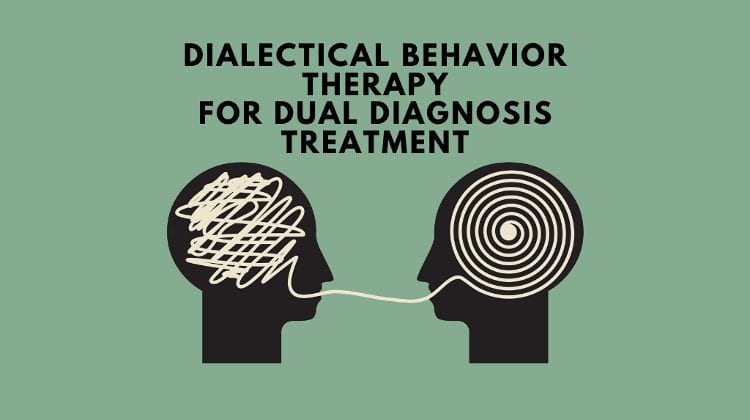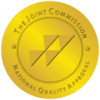Dialectical Behavior Therapy for Dual Diagnosis Treatment
April 29, 2020 - Addiction Treatment
Medically Reviewed by Mike Iwinski


Written By
DreamLife RecoveryDialectical Behavior Therapy, or DBT, is used to bring the opposing view points of change and acceptance together. This clash of concepts allows a person to accept their past and make changes for a better future in sobriety. People in DBT learn sober skills to cope with possible triggers and negative thoughts and behaviors to prevent relapse. If they do relapse, patients use it as a learning tool instead viewing it as failure, allowing them to accept their mistakes and make changes to avoid it again. DreamLife Recovery, located in Donegal, PA, uses DBT along with other therapies and holistic healing techniques to help people struggling with addiction and co-occurring disorders.
History of Dialectical Behavior Therapy
DBT was first developed by Dr. Marsha Linehan to treat patients with chronic suicidal tendencies and borderline personality disorder. In the 1970s, Dr. Linehan tried to use cognitive behavioral therapy (CBT) to treat her patients with borderline personality disorder and suicidal thoughts. She discovered some problems applying CBT to this specific patient population. CBT primarily focuses on change, which led to three major problems with these patients. The immediate focus on changing led patients to feel invalidated and would result in them refusing to participate in therapy. If change was pushed and patients became angry, the therapist would allow a change of subject, which reinforced avoidance behaviors. The final issue was lack of time to teach coping skills and improve behaviors. The focus was mostly on addressing concerns to keep the patient and therapist safe, leaving little time for much else.
The problems that arose when treating her patient population led Dr. Linehan to make adaptations to CBT and create DBT. Acceptance based skills were incorporated to allow patient validation and for them to feel supported before looking to make changes. Acceptance and change were brought together for patients to find patterns of bad behavior and develop skills for positive thoughts and actions. These techniques were incorporated into DBT to treat patients with mental health disorders. Overtime, DBT has been applied to help patients with substance abuse disorders and co-occurring mental health issues.
Theory Behind Dialectical Behavior Therapy
There are three driving frameworks that work together in DBT. The philosophy of dialects brings the opposing factors of change and acceptance together for the therapist and patient to analyze and build from. Dialects help a patient accept aspects of themselves or their pasts that they do not like and work to make positive changes to create a better life. Mindfulness is adapted from Zen Buddhism to keep the patient present in the moment instead of focusing on the past or future. This skill can allow the person to focus on the current situation and employ the skills they have learned to handle that situation. Stress can be reduced by using this practice, as they are not focused on past mistakes or worrying about what the future may bring. The last framework that helps form DBT is the biosocial theory that states some people are more likely to be emotionally vulnerable and unstable environments can lead to more intense emotional responses. These emotions can be difficult to handle and can lead to self-destructive behaviors that can damage relationships and cause problems with life skills. DBT uses these frameworks to teach patients skills to handle their extreme emotions and stressful situations without resorting to actions that can reduce their quality of life.
DBT Treatment for Co-Occurring Disorders
Many people struggling with addiction also have another underlying mental health condition. When someone is diagnosed with other disorders along with addiction is it referred to as dual diagnosis or co-occurring disorders. Co-occurring disorders with addiction must be treated simultaneously. If the underlying condition led to substance abuse and is left untreated, the person will go back to drugs or alcohol because the original trigger was not handled. Finding success in sobriety can be more difficult for those with a dual diagnosis but the right therapies can help get them on that path. DBT provides the skills and methods to sustain long term recovery.
DBT allows a person to develop skills to handle intense emotions, stressful situations, and maintain healthy relationships. These skills can help someone maintain a balance of their emotions and state of mind to prevent damaging behaviors. According to Addiction Campuses, along with treatment for borderline personality disorder, DBT has shown positive results in treating conditions such as: ADHD, bipolar disorder, bulimia, binge-eating disorder, depression, and post-traumatic stress disorder. These conditions occur frequently in people that are also struggling with addiction. DBT provides the opportunity to learn to handle emotions that may have led to substance abuse or other damaging actions in the past.
DreamLife Recovery uses individualized treatment plans for each client to ensure they can find success in recovery. We know there is no one-size-fits-all recovery method. Treatment plans take into account the substance that was abused, co-occurring disorders, past traumas, past treatments, and future planning that may be needed. DreamLife Recovery has detox, MAT, residential, and aftercare planning programs for those struggling with drug and alcohol addiction. If you or a loved one are struggling with addiction call our 24/7 admissions team at (844) 402-3592 or fill out a form now.
Resources:
- Blennerhassett, R. C., & O’Raghallaigh, J. W. (2005, March). Dialectical behaviour therapy in the treatment of borderline personality disorder. The British Journal of Psychiatry, 186(4), 278-280. doi:10.1192/bjp.186.4.278
- Treating Addiction With Dialectical Behavioral Therapy (DBT) – Vertava Health, 2021
- Dimeff, Linda A, and Marsha M Linehan. “Dialectical behavior therapy for substance abusers.” Addiction science & clinical practice vol. 4,2 (2008): 39-47. doi:10.1151/ascp084239









